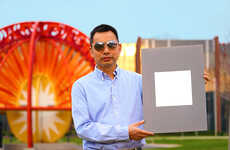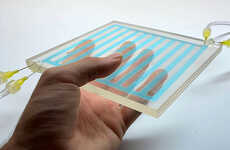
Stanford University Researchers Develop an Innovative Color Paint
References: news.stanford.edu
Researchers at Standford University have developed a performance-driven sunlight-reflecting paint that has a number of implications for today's day and age. Proposed as a solution to improving energy efficiency and reducing greenhouse gas emissions in buildings and beyond, the innovation is certainly ground-breaking. The paint's effectiveness is attributed to its ability to reflect high mid-infrared light, which plays a significant role in heat transfer.
The sunlight-reflecting paint is capable of keeping buildings cooler in the summer and warmer in the winter—thereby improving energy efficiency. The experiments showed a 36 percent reduction in energy use for heating and a nearly 21 percent reduction for cooling.
The paint is also versatile as it can be applied to both exterior walls and roofs to keep heat out, as well as interior walls to retain heat.
Image Credit: Yucan Peng
The sunlight-reflecting paint is capable of keeping buildings cooler in the summer and warmer in the winter—thereby improving energy efficiency. The experiments showed a 36 percent reduction in energy use for heating and a nearly 21 percent reduction for cooling.
The paint is also versatile as it can be applied to both exterior walls and roofs to keep heat out, as well as interior walls to retain heat.
Image Credit: Yucan Peng
Trend Themes
1. Sunlight-reflecting Paints - The innovative paint reflects high mid-infrared light to improve energy efficiency and reduce greenhouse gas emissions.
2. Energy Efficient Buildings - Using sunlight-reflecting paints can result in a 36 percent reduction in energy use for heating and a nearly 21 percent reduction for cooling.
3. Versatile Paint Application - The paint can be applied to both exterior walls and roofs to keep heat out, as well as interior walls to retain heat.
Industry Implications
1. Construction - Sunlight-reflecting paints offer innovative solutions for improving energy efficiency in buildings.
2. Architecture - Architects can utilize sunlight-reflecting paints to design energy-efficient structures that reduce greenhouse gas emissions.
3. Paint Manufacturing - The development of sunlight-reflecting paints opens up new opportunities for the paint manufacturing industry to create more sustainable products.
3.1
Score
Popularity
Activity
Freshness























